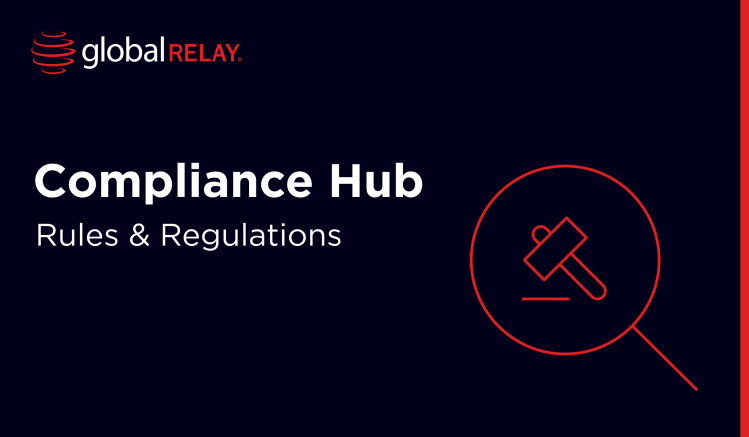Written by a human
What is FRCP Rule 34
Rule 34 of the Federal Rules of Civil Procedure enables legal practitioners to use and sort their electronic resources in the United States. In this piece, you’ll learn why it is necessary, as well as how firms can comply in order to meet regulatory requirements in terms of eDiscovery.
Background on the Federal Rules of Civil Procedure
The Federal Rules of Civil Procedure (FRCP) are the basic framework for all court operations across the US. They were first introduced in 1872, in an attempt to streamline the nation’s courts as some were still operating under British regulation, and others under their own State procedures.
Then, in 1937, Congress passed what we now recognise as the FRCP. This update enabled the Supreme Court to issue general rules of practice and procedure that could apply in courts, nationwide.
In this article we’ll cover the key provisions of FINRA conduct Rule 4511 to help your organization stay compliant. We’ll be shedding light on specific areas including electronic communications and the implications of using electronic recordkeeping systems and outsourced recordkeeping to meet the regulatory requirements.
eDiscovery updates
In 2010, the FRCP was amended to establish transparent rules for the handling of electronic documents.
Over the years, it had become much harder for legal representatives to keep track of vast amounts of emails, texts, phone records and the mobile devices themselves. As such, firms were struggling to make discovery accessible to all parties.
Note: discovery refers to the documentation that legal teams must make accessible and exchange before trials begin, to ensure that they are fast, cost-effective and fair.
Therefore, the 2010 updates established clear procedural rules for handling electronic communications. The regulation enables courts to store and properly integrate these documents for evidence.
FRCP Rule 34: explained
FRCP Rule 34 specifically outlines the expectations with regards to providing a uniform and repeatable process when requesting and procuring evidence. Firms can leverage the Federal rule to prevent litigation disaster.
It involves rules about issuing requests and producing electronically stored information (ESI).
The ESI could be comprised of:
- Drawings
- Writings
- Graphs
- Charts
- Sound recordings
- Photographs
- Data, databases and more
Procedures for compliance
Rule 34 can be broken down into two different sections:
- Issuing requests
- Responding
Issuing requests
The first Civil Procedure Rule around issuing requests for ESI is that a party may serve any other party within the scope. This would enable the requesting party to inspect, copy, sample or test any document.
The items must be stored in a medium that allows the full scope of information to be obtained – any ‘future-proofed’ discovery solution should fit this. For example, this rule permits inspectors to access designated land to then be measured or photographed.
However, there are some limitations for issuing a document request. For example, if providing the ESI becomes unreasonably accessible, due to the cost or burden.
Moreover, parties are not allowed to make free-for-all requests around producing documents. In fact, each request must be clarified with a reason for the inspection of each item. Requests must involve a reasonable time, place and manner for inspections.
Responding
FRCP Rule 34 also involves guidance for the responding party to evidence requests, and either approving or objecting to them. No matter the result, parties must respond within 30 days (although court mandates may increase or decrease this timeline).
For each item within a request, the response must either permit inspection, or object with full grounds and reasoning. In 2015, the rules were updated to remove broad or boilerplate reasons for objection – these must be specific and legally-grounded to prevent discovery disputes.
When inspections are approved, parties must produce the documents as they are typically presented and used. The exception to this is when categories of items are requested, such as a collection of photos from one location at a crime scene. Here, the category of items should be grouped together, and labeled as such.
Finally, courts can compel a non-party to produce documentation or tangible items and permit inspection.
Case Study: Hines Security
In 2021, Hines Security were required to meet new compliance standards for data retention and compliance supervision as their business evolved. The team were looking for a solution that could scale as they did, with the most important aspect being user friendliness for its team members.
Hines Security partnered with Global Relay. With a cloud-based eDiscovery system, this technology can easily expand as the client grows. Moreover, it enables the firm to monitor their electronic communications automatically, and dramatically reduces search times for documentation and other ESI.
Since migration to the Global Relay system, Hines Security have experienced a significant optimization in their eDiscovery system.
Take the heavy lifting out of eDiscovery
During any critical investigation, every second counts. That’s why Global Relay offers Discovery-as-a-Service to support teams to find what they need, quickly.
Many legal teams can be thrown awry when subpoenas or requests come through for access to specific documents in legal discovery. With resources tight, it can feel like a waste of employee time and money to complete these requests on behalf of third parties.
Global Relay specializes in eDiscovery to support legal teams with these requests, ensuring that your staff focuses on the important parts of the investigation. With over 50 years of combined product and discovery experience, we’re just a click away.
Book your bespoke demo to find out how Global Relay suits your individual compliance requirements.

